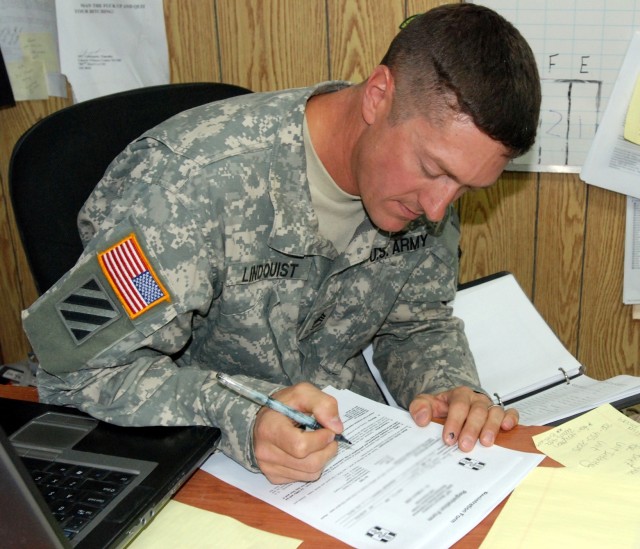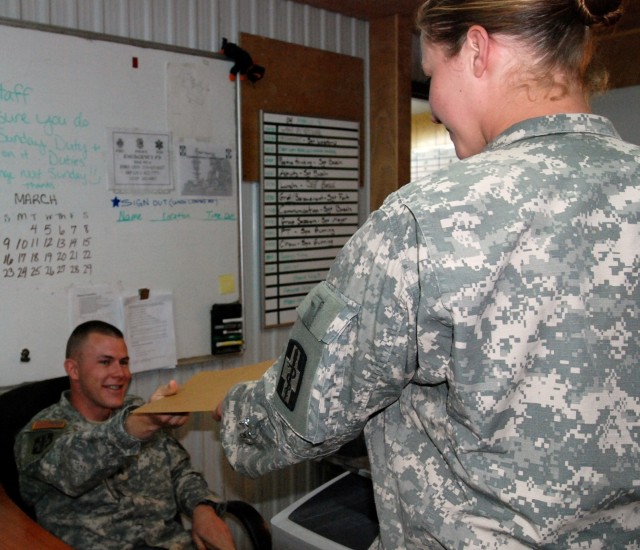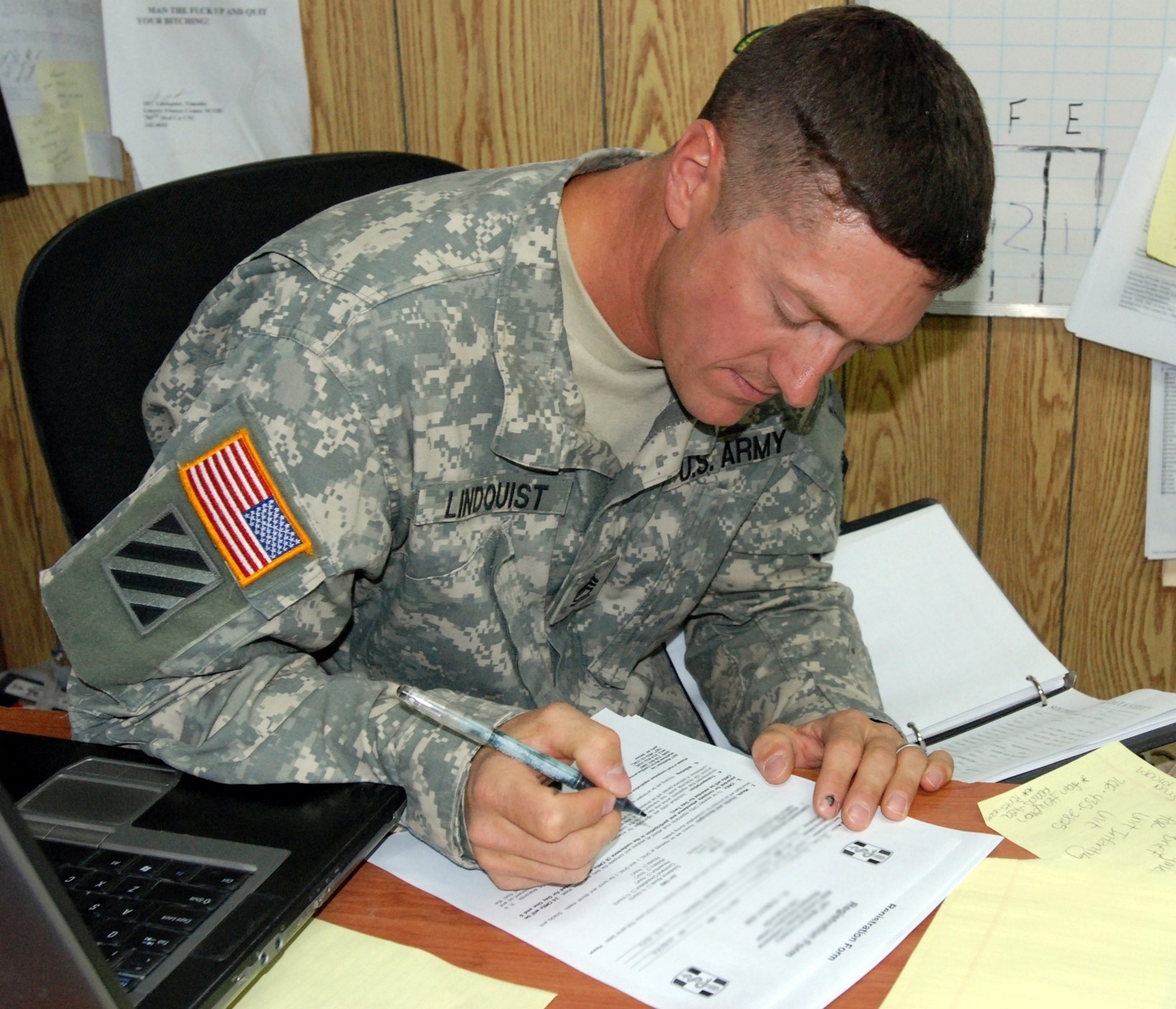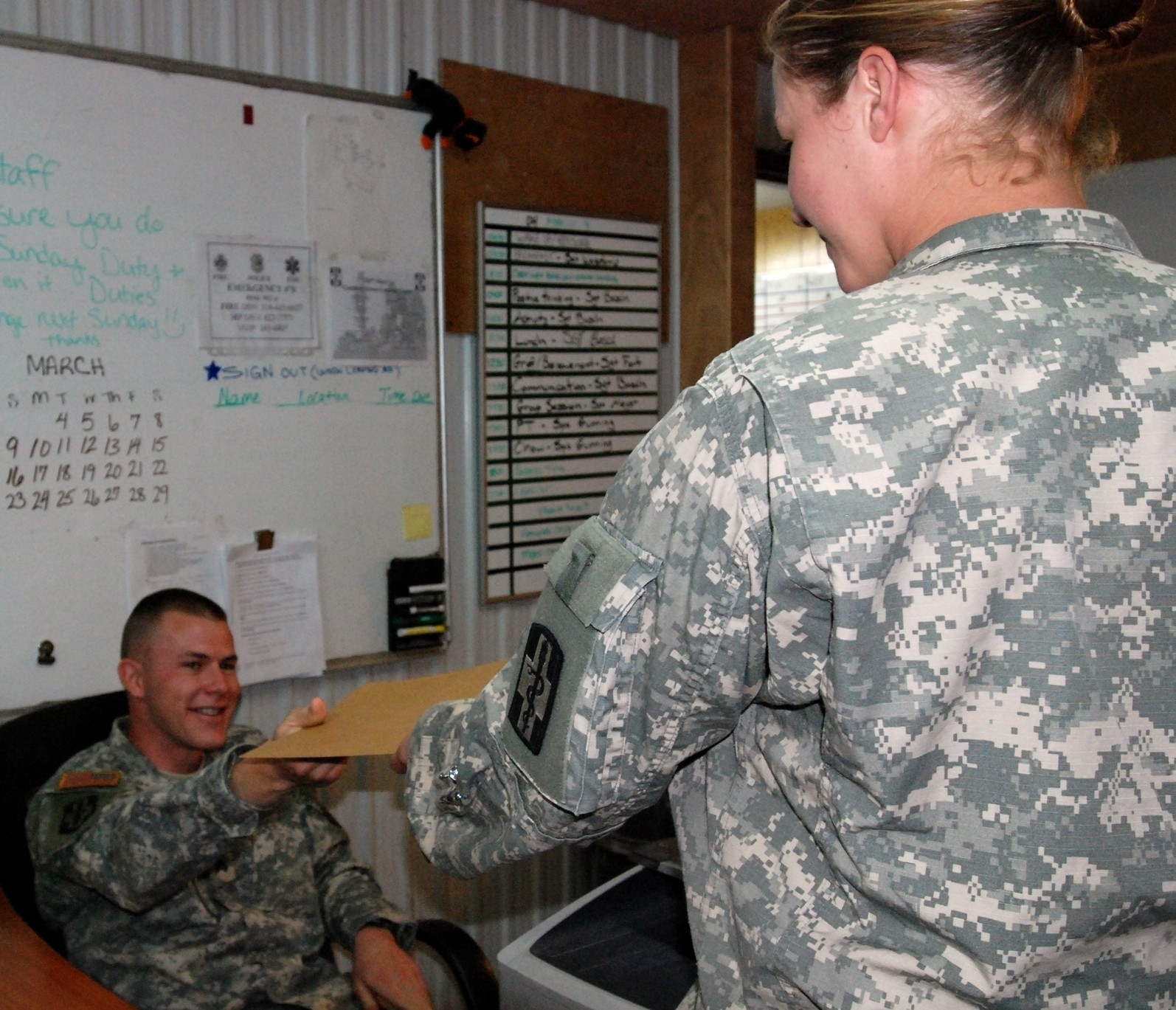WASHINGTON (Army News Service, March 7, 2008) -- "Battlemind" pre-deployment training has helped maintain the mental health of deployed Soldiers, stigma has decreased for those who seek treatment, but troops still need more "dwell time" at home, according to findings of an Army study released this week.
A team of Army behavioral healthcare providers shared findings of the Army's fifth Mental Health Advisory Team, known as MHAT-5, with news media Thursday at the Pentagon. Results of the study "reflect a snapshot of the morale and mental health of deployed Soldiers last fall in Iraq and Afghanistan," according to Maj. Gen. Gale S. Pollock, deputy surgeon general for Force Management.
"The MHAT-5 focused on the behavioral health of Soldiers, the behavioral healthcare system in Iraq and Afghanistan, and the future of behavioral healthcare for Soldiers engaged in combat," Pollock said. The advisory team surveyed a total of 2,994 Soldiers, 2,295 in Iraq and 699 in Afghanistan, as well as 350 behavioral health, primary care and unit ministry team members in Iraq and 87 in Afghanistan.
Leaders in both theaters of operation and at home began implementing MHAT recommendations in February, once the assessment was complete, Pollock said.
The team leader for the MHAT-5 and chief of the Department of Military Psychiatry at the Walther Reed Army Institute of Research, Lt. Col. Paul Bliese, articulated the unique nature of the 2007 study. "This was the first time we had a large amount of data that allowed us to look month by month at the reports of mental health problems as a function of the months deployed," he said. It was also the first time Afghanistan had been included in an MHAT study, although a similar, independent study of the behavioral health of Soldiers deployed as part of Operation Enduring Freedom was conducted in 2005. The findings weren't released at that time, but the results are included in the MHAT-5 report.
The data collected via Soldier/provider surveys, interviews and focus groups led to several major findings, according to the study. Although there were separate teams deployed to the two theaters, many of the results were similar, not only between theaters, but compared to previous years. Soldiers in Iraq and Afghanistan reported similar rates of mental health problems, to include acute stress, depression or anxiety, and those rates remained relatively unchanged from other MHAT studies.
The report also showed that Soldiers across theaters shared common barriers to mental health care. In Iraq, for example, a large number of Soldiers were moved to smaller outposts to establish close contact with civilians and security forces. These moves placed them farther from health-care providers normally found at large bases, according to Pollock, who said the Army is currently working to help make care more available.
In Afghanistan, troops are scattered over a large area, making access to care difficult. "Commanders in Afghanistan have responded to the report's recommendations by moving health-care providers closer to troops," Pollock said.
Col. Elspeth C. Ritchie, psychiatry advisor to the Army surgeon general, said the ratio of Soldiers to behavioral health providers has increased because the number of providers has remained steady, while troop numbers have surged. She pointed to a number of measures the Army is both researching and undertaking to combat care deficiencies. "One is augmenting uniformed providers with civilian providers. Another very important piece is to make sure our primary-care providers and medics are trained in recognition and treatment of the psychological difficulties of war," she said.
Another similarity in the reports directly links behavioral health issues to multiple and longer deployments. The findings showed, "Reports of work-related problems due to stress, mental health problems and marital separations generally increased with each subsequent month of the deployment." The team also determined that Soldiers on a third or fourth deployment were much more likely than those on first or second deployments to experience mental health and work-related problems.
"What we have now is the ability to get a large enough sample size to look at those who are on their third and fourth deployments," Bliese said.
Within the sample group, there were about 129 Soldiers on their third or fourth deployment. Roughly 27.2 percent of those Soldiers screened positive for mental health problems, compared to 11.9 percent of those on their first deployment, and 18.5 percent on their second.
"We see a similar pattern for morale, and some of the same reporting for job-related problems," Bliese said, "where again, this group that's on their third or fourth deployment is at least reporting higher job-related problems compared to those on their second or first deployment."
Bliese said one of the conclusions the advisory team drew from these results was that Soldiers are not getting the time, between deployments, to completely recover before they arrive back in theater. "We refer to that as, 'dwell time,' and that was brought up in the MHAT-4 report as well," he said. "It is consistent with other data that we've collected back here in garrison."
The MHAT-5 report showed Soldiers in the focus groups felt that a minimum one-to-one dwell time/deployment time ratio was necessary. "If they were on a 15-month deployment, they certainly felt like they deserved a 15-month dwell time, which makes sense," Bliese said.
Pollock said the dwell time issue is being addressed by the Army, and has a lot to do with why the service is taking measures to increase total force numbers.
"Looking at the fact that it does seem that we are going to be involved in persistent conflict, we need to ensure that we're doing everything possible to take care of the men and women that are volunteering to serve," she said. "By having a larger pool to draw from, we put that stressor on them at a less frequent interval."
The MHAT-5 research pointed to improved pre-deployment training. Soldiers who participated in "Battlemind" training, were better prepared for the rigors of combat and reported fewer mental health problems, according to Pollock. The Army implemented Battlemind pre-deployment training service-wide in 2006 as a result of MHAT-4 recommendations.
The study also found that OIF Soldiers reported lower stigma associated with seeking mental health care than in 2006, suggesting outreach and prevention efforts are more effective.
Bliese described the small but steady decrease in reports of stigma as encouraging. "Because it's such a culturally-engrained problem (the stigma attached to seeking care), it's very unlikely that the Army's going to change this 10-15 percentage points in any given year. So realistically we would expect a 1-2 percent change on a year-by-year basis," he said. "When we model out the change in stigma over time, that's exactly what we're beginning to see."
He credited senior leadership involvement, and training for the apparent change in Army culture in terms of seeking mental health care.
Since the inception of the mental health advisory team concept in 2003, Ritchie said the studies have provided invaluable information to behavioral healthcare providers. "We are hoping, because of the results of these surveys, to continue to put into place prevention, early intervention and resiliency building, and we are doing all that."
Pollock stressed the importance of the advisory teams, and said they pinpoint how and where the Army can better meet behavioral healthcare needs. "I think that the evidence that we're taking it (mental health) very seriously is the continued investment that the Army is making to ensure we have the various providers available, that we're looking at any of the barriers that the Soldiers identify that prevent them or slow them down from getting to the people that they want to talk to," she said. "We want to provide the highest level of well-being that we can for these men and women, because we know that we're placing significant demands on them."




Social Sharing